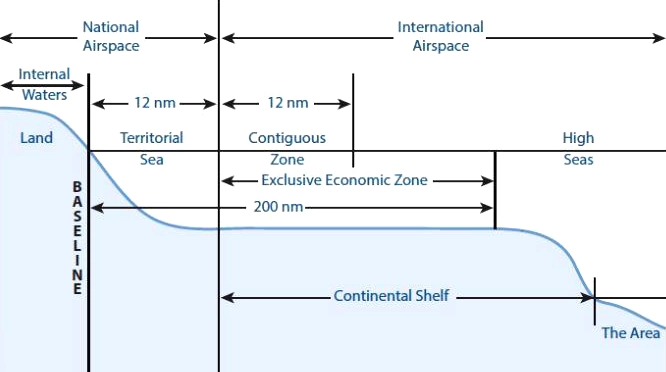Biodiversity & Environment
BBNJ Treaty
- 22 Mar 2022
- 5 min read
For Prelims: UNCLOS, BBNJ, IUCN.
For Mains: BBNJ Treaty, Conservation.
Why in News?
Recently, the fourth meeting of the Intergovernmental Conference (IGC-4) was held in New York to conclude a draft of the instrument on the conservation and sustainable use of marine Biological diversity in areas Beyond National Jurisdiction (BBNJ).
- The IGC-4 is convened under the United Nations Convention on the Law of the Sea (UNCLOS).
What is the BBNJ Treaty?
- The “BBNJ Treaty”, also known as the “Treaty of the High Seas”, is an international agreement on the conservation and sustainable use of marine biological diversity of areas beyond national jurisdiction, currently under negotiation at the United Nations.
- This new instrument is being developed within the framework of the UNCLOS, the main international agreement governing human activities at sea.
- It will achieve a more holistic management of high seas activities, which should better balance the conservation and sustainable use of marine resources.
- BBNJ encompasses the high seas, beyond the exclusive economic zones or national waters of countries.
- According to the International Union for Conservation of Nature (IUCN), these areas account for “almost half of the Earth’s surface”.
- These areas are hardly regulated and also least understood or explored for its biodiversity - only 1% of these areas are under protection.
- Launched at the One Ocean Summit in February 2022, the High Ambition Coalition on Biodiversity Beyond National Jurisdiction brings together many delegations engaged in the BBNJ negotiations on a common and ambitious outcome at the highest political level.
- The negotiations are centred around a package of elements agreed upon in 2015, namely:
- the conservation and sustainable use of marine biological diversity of areas beyond national jurisdiction, in particular, together and as a whole, marine genetic resources, including questions on the sharing of benefits
- area-based management tools, including marine protected areas
- environmental impact assessments
- capacity-building and the transfer of marine technology
What is the Need of Legally Binding Instrument for BBNJ?
- Areas beyond national jurisdiction comprise 95% of the ocean and provide invaluable ecological, economic, social, cultural, scientific and food-security benefits to humanity.
- However, these areas teeming with life are now vulnerable to growing threats, including pollution, overexploitation, and the impacts already visible of climate change.
- The increasing demand for marine resources in the coming decades – for food, minerals or biotechnology – threatens to exacerbate this problem.
- The high seas are extremely biodiverse and have been exploited without even knowing its impacts.
- While there are scientific explorations of the surface water of the high seas, the deep sea i.e. below 200 metres of the surface has hardly been studied.
- The deep seafloors, believed to be the harshest habitat, the extinction process is setting in.
- The 184 species (of Molluscs) assessed, 62% are listed as threatened: 39 are critically endangered, 32 are endangered and 43 are vulnerable.
- In the Indian Ocean vents, 100% molluscs are already listed as critically endangered. This shows the urgent need to protect them from extinction. Yet, the International Seabed Authority, a Jamaica-based intergovernmental body, is allowing deep sea mining contracts.
What is UNCLOS?
- The United Nations Convention on the Law of the Sea (UNCLOS), 1982 is an international agreement that establishes the legal framework for marine and maritime activities. It is also known as Law of the Sea.
- It divides marine areas into five main zones namely- Internal Waters, Territorial Sea, Contiguous Zone, Exclusive Economic Zone (EEZ) and the High Seas.
- It is the only international convention which stipulates a framework for state jurisdiction in maritime spaces. It provides a different legal status to different maritime zones.
- It provides the backbone for offshore governance by coastal states and those navigating the oceans.
- It not only zones coastal states’ offshore areas but also provides specific guidance for states’ rights and responsibilities in the five concentric zones.





